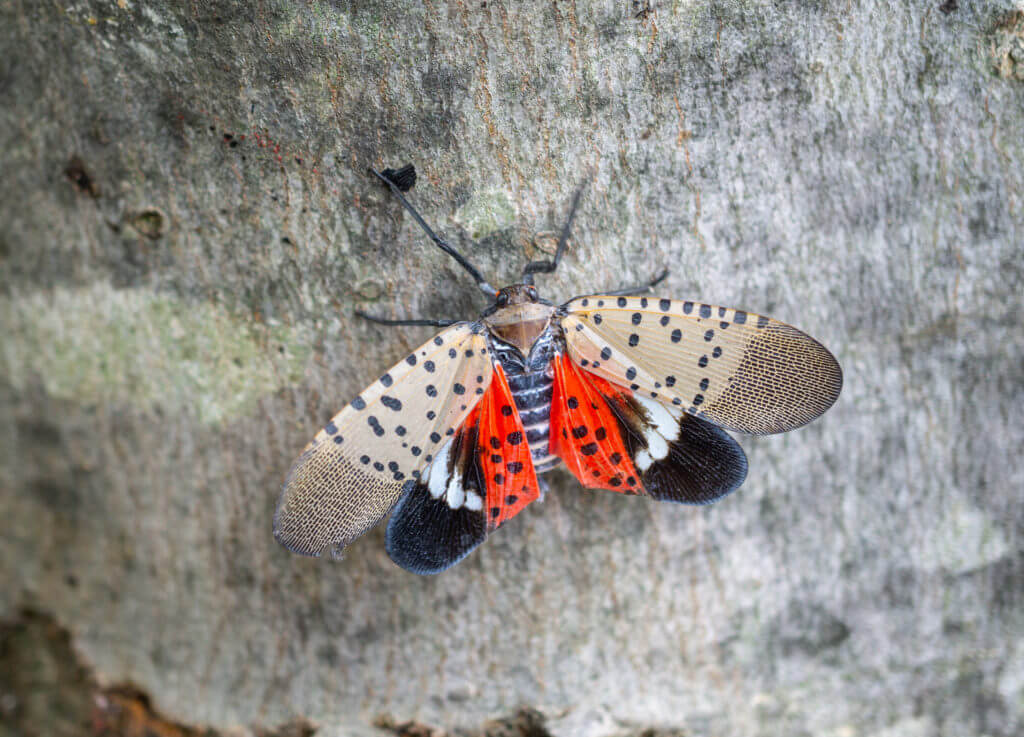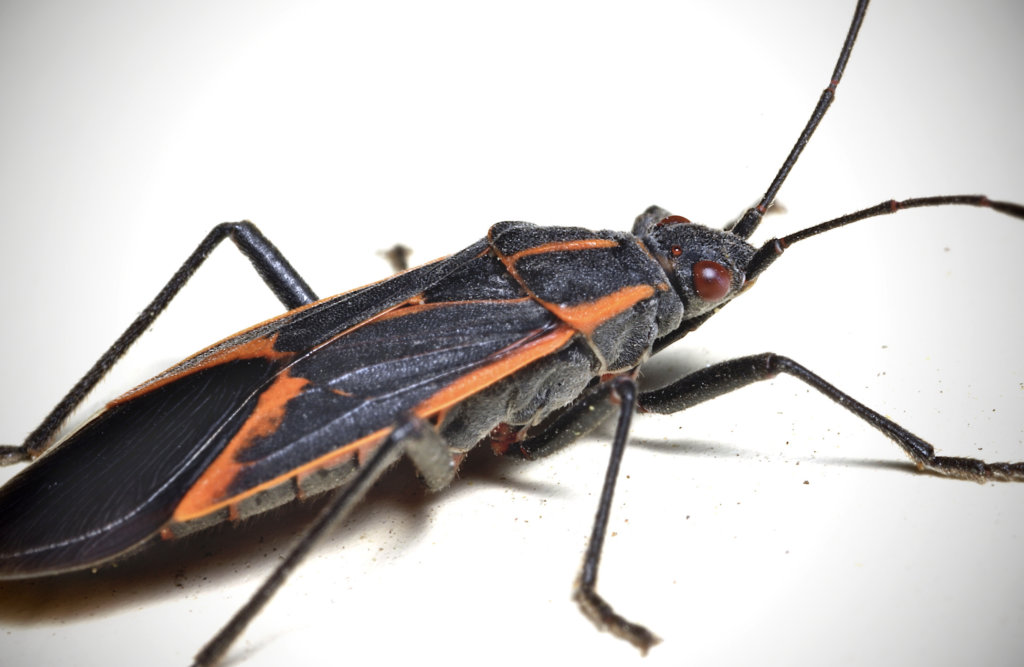They may not look all that much alike when you see them next to each other with a label. But if you just see one at your home scurrying or flying by, would you be able to tell them apart? Maybe? Well, enough people are confusing these two insects, so we thought we’d give you an easy way to identify the differences between the boxelder bug and the spotted lanternfly!
Looks:
As bugs go, spotted lanternflies and boxelder bugs are kind of pretty. They are both red and black, which is why they are being mistaken for each other, but the actual colors and characteristics are quite different.

What does a spotted lanternfly look like? The spotted lanternfly adult is approximately 1″ long and ½” wide at rest. The adults’ forewings (the ones on their backs that you see right away) are gray with black spots. The ends of these wings are mottled with black and gray. Spotted lanternfly hindwings (which are under the forewings, closer to the body) are a strong red, which shows through making them very colorful, especially in flight. When the insects are not flying, the red color is partially visible through the forewings and resembles the light from a lantern – hence their famous name. Spotted lanternflies sometimes appear to have only four legs, but like all insects, they have six. Their two back legs are sometimes hidden under the wings. Their antennae, however, are not visible.

What do boxelder bugs look like? Boxelder bugs are flattened and resemble an elongated oval. They have six legs that are easy to see, two distinctive antennae, and are about ½” long. Like the lanternflies, they also have wings. But unlike the lanternflies’ wings, boxelder bugs’ wings are flat against their backs. The wings are largely black-colored, with red accents along the margins. Boxelder bugs also have a red “racing stripe” behind their heads.
Habitat:
Since the first spotted lanternfly was discovered in Pennsylvania in 2014, they have been detected in 11 eastern states and counting including Connecticut, Delaware, Massachusetts, Maryland, North Carolina, New Jersey, New York, Pennsylvania, Virginia, and West Virginia. Their preferred host is the tree of heaven, but they have a large host range including maples, black walnuts, birch, and fruit trees. Wingless immature lanternflies may be visible on trees and buildings during the summer. Depending on their age, they will be black with white spots, or bright red with black and white spots. The adults you see in the fall do NOT want to sleep in your house over the winter like boxelder bugs or brown marmorated stink bugs. They congregate on buildings opportunistically as they finish out their adult lives, dying before winter starts.
Boxelder bugs are native to the Mid-Atlantic area, but they can also be found as far east as Nevada and as far north as eastern Canada. They are found wherever boxelder trees are found, so lots of places! They hibernate through the colder months in buildings and homes. In the spring, they emerge and begin feeding on fallen boxelder seeds and young boxelder foliage. Then the female bugs lay eggs, which turn into wingless immature boxelder bugs. Those youngsters change into winged adults in the summer, and as fall approaches, they seek places to sleep for the winter. It’s at this time they are considered nuisance pests as they seek entry points into homes and other buildings.
Threats:
Stone fruits, apples, and blueberries are just three examples of the beneficial plants at risk from spotted lanternfly feeding. They are also a problem to vineyards and anyplace else that has grapevines. In addition, their egg masses can be laid on any vertical surface including trees, buildings, and even playground equipment. Nobody wants to encounter spotted lanternfly eggs on their way down the slide. They do not sting or bite but are not strong flyers and can fly right into your head with reckless abandon. If you see them, crush them, and report them to your state agricultural agency. But be swift – they hop quickly.
Boxelder bugs can pierce the skin with their mouthparts, leaving a red spot that can be mistaken for a mosquito bite. Unlike crushing the spotted lanternfly, crushing a boxelder bug is not recommended since they often let off an unpleasant odor in defense when handled or smashed. Also, boxelder bug waste is an orange and red liquid that can stain fabrics. You can vacuum boxelder bugs up instead of crushing them – but make sure to discard the bag immediately or empty the canister into a bag you can close, so you don’t just let them crawl out and back into your home.
The more you know about boxelder bugs and spotted lanternflies, the better off you are. Knowing what kind of pest is around will not only push you in the correct direction of how to deal with them, but it will also help the pest control professional you call to be ready to deal with them for you.